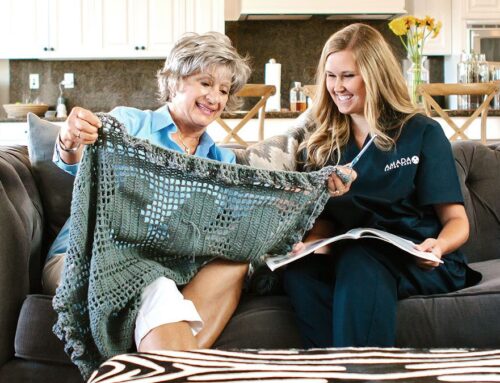Osteoporosis, often dubbed the “silent thief,” is a condition that quietly undermines the bones, making them fragile and more likely to break. Although it can affect anyone, seniors are particularly at risk. Its stealthy nature means that many seniors are unaware they have osteoporosis until they suffer a fall and experience a fracture, which can have devastating consequences. However, understanding osteoporosis and taking proactive measures can significantly mitigate its risks.
The Risks of Osteoporosis in Seniors
Osteoporosis literally means “porous bone” and the condition is characterized by low bone mass and deterioration of bone tissue, leading to increased bone fragility. For seniors, this condition is particularly perilous, as it elevates the risk of fractures. These fractures can lead to prolonged periods of immobilization, decreased quality of life, and in severe cases, death. The most common injuries associated with osteoporosis include fractures of the hip, spine, and wrist.
The cause of osteoporosis is multifaceted, encompassing genetic, lifestyle, and environmental factors. As we age, our bone density naturally decreases, but for some, this loss is significantly more pronounced and leads to osteoporosis.
CLICK HERE to learn more about “bone health basics” from the Bone Health and Osteoporosis Foundation, which debunks 10 myths associated with osteoporosis.
Key Prevention Tips to Combat Osteoporosis in Aging
While the genetic predisposition to osteoporosis cannot be altered, there are several lifestyle changes and preventive measures that can significantly reduce the risk of developing this bone disease.
-
Calcium and Vitamin D Intake
A diet rich in calcium and vitamin D is crucial for bone health. Calcium strengthens bones, while vitamin D helps the body absorb calcium more effectively. Seniors should aim for at least 1,200 mg of calcium and 800 IU of vitamin D daily. These nutrients can be found in dairy products, green leafy vegetables, fish, and fortified foods. Supplements can also be considered under a healthcare provider’s guidance.
-
Regular Exercise
Physical activity is vital for maintaining strong bones. Weight-bearing exercises, such as walking, jogging, and dancing, can help build and maintain bone density. Strength training is also beneficial as it strengthens the muscles that support the bones.
-
Avoid Smoking and Limit Alcohol Consumption
Smoking and excessive alcohol intake have been linked to decreased bone density. Quitting smoking and limiting alcohol intake can significantly benefit bone health.
-
Bone Density Testing
Regular bone density tests can help detect osteoporosis early, especially for individuals at higher risk. Early detection means early intervention, which can slow the disease’s progression.
-
Medication
For those at a higher risk or who have been diagnosed with osteoporosis, medication may be necessary. Medications like bisphosphonates can help reduce the loss of bone mass. Always consult with a healthcare provider for a medication plan that is right for you.
Navigating the Risks Together with Caregiving Support at Home
Awareness and proactive prevention are key to navigating the risks associated with osteoporosis. By adopting a healthy lifestyle, ensuring adequate intake of calcium and vitamin D, and undergoing regular medical check-ups, seniors can significantly reduce their risk of fractures and maintain their independence and quality of life.
Osteoporosis doesn’t have to be an inevitable part of aging. With the right strategies in place, it’s possible to protect your bones and your future, ensuring that your golden years remain vibrant and fulfilling.
If you or a senior loved one would like to learn more about how having the support of a trained Amada caregiver can assist in protecting bone health or in safely recovering from orthopedic surgery, please CLICK HERE to find the Amada office nearest you.



